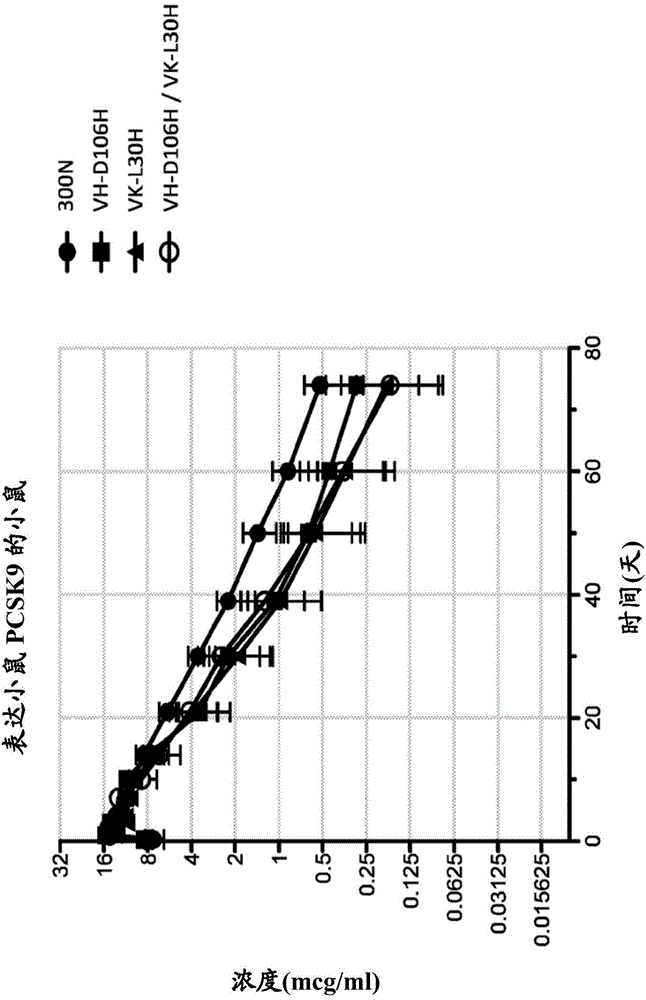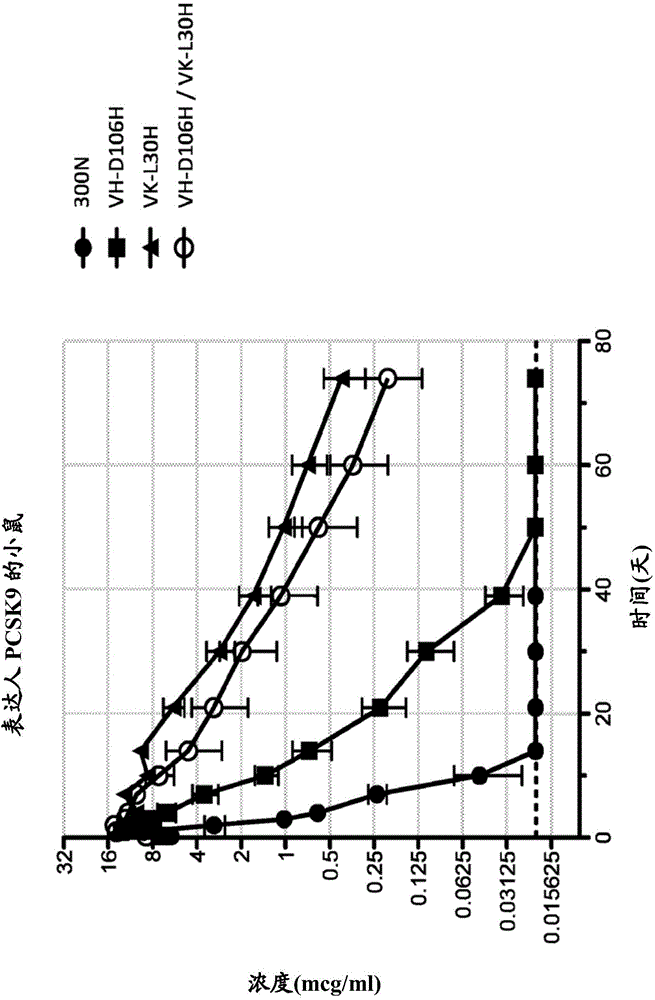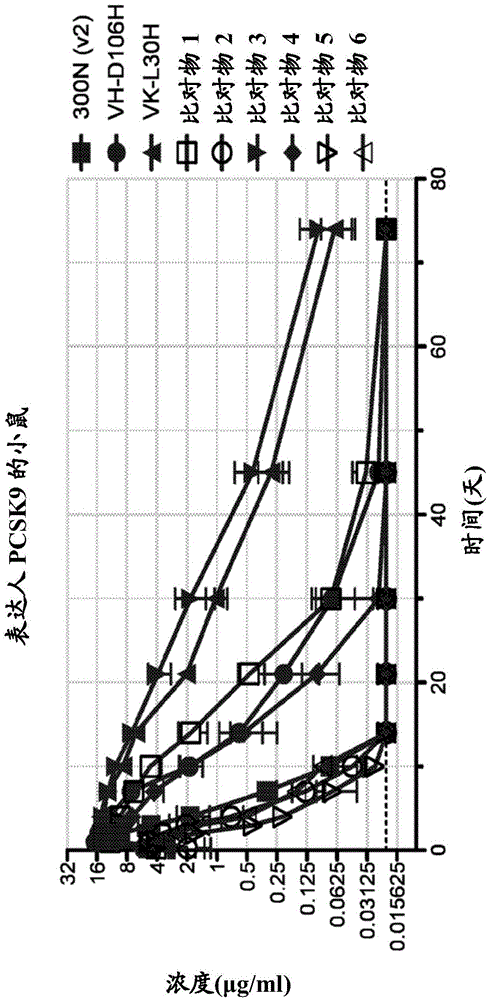Anti-pcsk9 antibodies with ph-dependent binding characteristics
A technology of antibodies and binding fragments, applied in the direction of antibodies, specific peptides, drug combinations, etc.
- Summary
- Abstract
- Description
- Claims
- Application Information
AI Technical Summary
Problems solved by technology
Method used
Image
Examples
Embodiment 1
[0145] Example 1. Production of human antibodies against human PCSK9
[0146] Human anti-PCSK9 antibodies were produced as described in US Patent No. 8,062,640. Table 1 lists the sequence identifiers of the heavy chain and light chain variable region amino acid sequence pairs and CDR amino acid sequences of selected anti-PCSK9 antibodies, and their corresponding antibody names. Nucleotide sequences are given with odd sequence identifiers corresponding to even sequence identifiers in Table 1. For example, SEQ ID NO: 1 is the nucleotide sequence encoding the amino acid sequence of SEQ ID NO: 2; SEQ ID NO: 3 is the nucleotide sequence encoding the amino acid sequence of SEQ ID NO: 4; and so on.
[0147] Table 1: Amino Acid Sequence Identifiers of Selected Anti-PCSK9 Antibodies
[0148]
[0149]
[0150]
[0151]
[0152] Any of the anti-PCSK9 antibodies listed in Table 1 (with the amino acid sequences of their corresponding heavy and chain variable regions and / or CD...
Embodiment 2
[0153] Example 2. Construction of histidine substitution mutants of human anti-PCSK9 antibodies
[0154] The anti-PCSK9 antibody designated 300N is known to have intermediate pH-dependent binding properties with decreased binding affinity for PCSK9 at acidic pH, and enhanced pharmacokinetics (see US Patent No. 8,062,640). In order to produce antibodies with even greater pH-dependent binding properties (i.e., binding decreases at low pH compared to neutral pH) and improved in vivo potency (e.g., longer antibody serum half-life, prolonged cholesterol-lowering activity, etc.) ) of the 300N variant to construct a series of variant antibodies. Specifically, a mutated version of 300N was constructed in which each amino acid within the complementarity determining region (CDR) of 300N was individually mutated to histidine. As shown in Table 1, the heavy chain variable region (HCVR) of the parental 300N antibody comprises the amino acid sequence of SEQ ID NO: 218, and the light chain ...
Embodiment 3A
[0162] Example 3A. Binding properties of variant anti-PCSK9 antibodies at neutral and acidic pH
[0163] The histidine-substituted variant antibody of Example 2 was tested for pH-dependent binding to human PCSK9 using a real-time plasmon resonance biosensor (Biacore T200) assay at 25°C, pH 5.75 or pH 7.2. The purpose of this experiment was to identify histidine substituted variant antibodies that exhibit reduced human PCSK9 binding at acidic pH relative to neutral pH.
[0164] The Biacore CM4 sensor chip is derivatized with a monoclonal mouse anti-human Fc antibody to capture human antibodies. After transient expression in Chinese hamster ovary (CHO) cells, histidine-substituted variant anti-PCSK9 antibodies from culture medium were captured on the surface of anti-human Fc sensors. Human PCSK9 (SEQ ID NO: 755) with a C-terminal myc-myc-hexahistidine tag (hPCSK9-mmH) at different concentrations ranging from 3.125 nM to 500 nM was mixed at a flow rate of 50 μl / min Injection wa...
PUM
 Login to View More
Login to View More Abstract
Description
Claims
Application Information
 Login to View More
Login to View More - R&D
- Intellectual Property
- Life Sciences
- Materials
- Tech Scout
- Unparalleled Data Quality
- Higher Quality Content
- 60% Fewer Hallucinations
Browse by: Latest US Patents, China's latest patents, Technical Efficacy Thesaurus, Application Domain, Technology Topic, Popular Technical Reports.
© 2025 PatSnap. All rights reserved.Legal|Privacy policy|Modern Slavery Act Transparency Statement|Sitemap|About US| Contact US: help@patsnap.com



